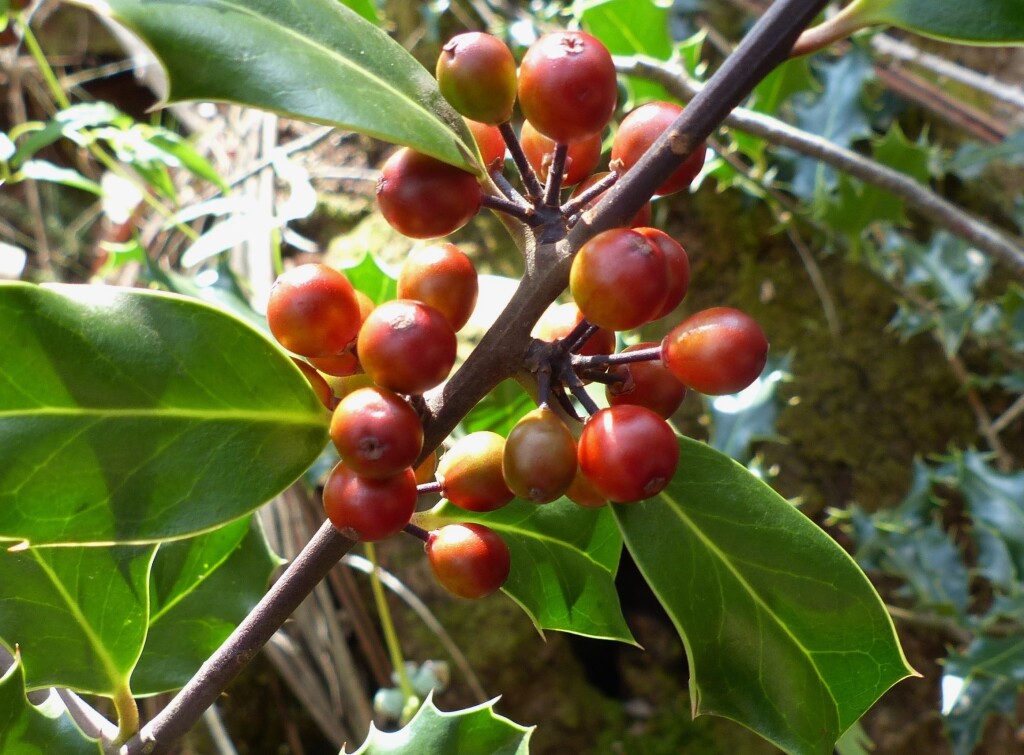Aquifoliaceae
Trees or shrubs. Leaves alternate, rarely opposite or in pseudowhorls, simple; stipules small or absent. Inflorescences axillary racemes or panicles of cymes, or terminal and subterminal racemes, rarely flowers solitary; bracts usually present. Flowers regular, usually unisexual on dioecious plants; sepals usually 4–6, imbricate, free or united at base; petals usually 4–6, imbricate or valvate, free or united, sometimes absent; stamens usually 4–6, mostly opposite sepals, sometimes epipetalous, reduced to staminodes in female flowers, filaments free, anthers usually 2-celled, introrse, opening by longitudinal slits; disc absent; ovary superior, usually 2–8-celled, rudimentary in male flowers, ovule 1(rarely 2) per cell, pendulous, style terminal, short, stigma sessile, capitate or lobed. Fruit a drupe, usually with 2–8 single-seeded pyrenes; seeds with a small straight embryo, endosperm copious, oily.
4 genera with c. 400 species, chiefly in tropical and subtropical regions, especially Central and South America and east Asia; 2 genera and 4 species (1 naturalised) in Australia.
Jeanes, J.A. (1999). Aquifoliaceae. In: Walsh, N.G.; Entwisle, T.J., Flora of Victoria Vol. 4, Cornaceae to Asteraceae, pp. 54–55. Inkata Press, Melbourne.
 Spinning
Spinning


